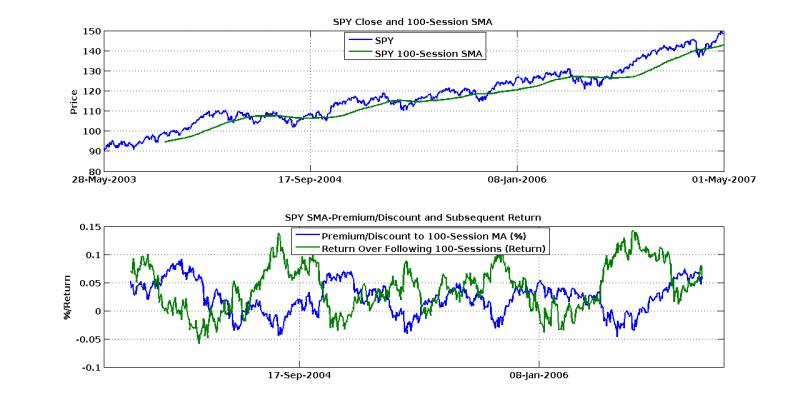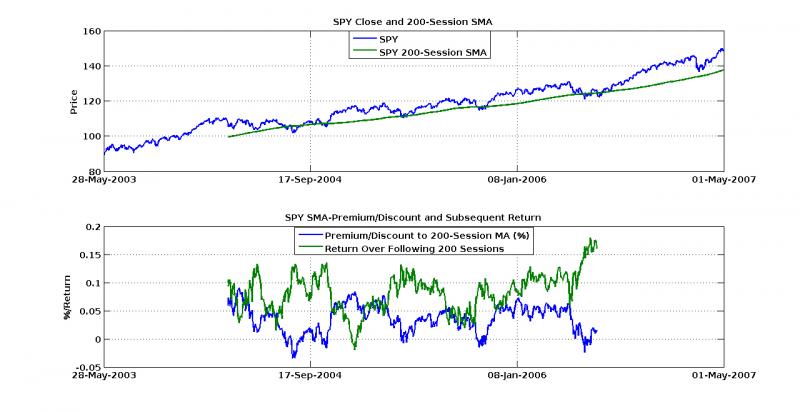This post was originally published on May 25th, 2007. It has been slightly modified from a previous version of the site.
One of the common threads of discussion in the financial community lately has been volatility – where it is now, where it has been, and where it might be soon. Though yesterday’s events certainly caused a spike, the futures this morning seem to indicate that the VIX will likely drop again into the weekend.
Regardless of what will happen today, I wanted to cover which ETFs, either by asset choice or by asset management, are most affected by the VIX and what it represents.
Below are the twenty most and least correlated ETFs and CEFs to the VIX.
Twenty Most Negatively Volatility Correlated ETFs and CEFs
| Symbol | Corr |
| JSC | -20.42% |
| MVV | -19.76% |
| SSO | -17.30% |
| DDM | -16.28% |
| KRE | -15.46% |
| JPP | -14.79% |
| DXD | -12.77% |
| SDS | -12.76% |
| MZZ | -12.37% |
| XPH | -11.31% |
| KIE | -10.17% |
| RPV | -9.88% |
| CHI | -9.71% |
| QTEC | -9.67% |
| QID | -9.54% |
| HCF | -9.50% |
| DBC | -9.48% |
| MUA | -9.20% |
| PNI | -9.16% |
| NZX | -8.49% |
Ten Most Positively Volatility Correlated ETFs and CEFs
| Symbol | Corr |
| PTH | 10.61% |
| XRO | 10.62% |
| DPD | 10.66% |
| EGF | 10.69% |
| PIC | 11.36% |
| PIQ | 11.36% |
| RYE | 11.37% |
| FXA | 11.74% |
| DEF | 12.28% |
| PYZ | 12.61% |
| PJB | 12.84% |
| NFO | 13.10% |
| CVY | 13.18% |
| STH | 13.79% |
| PSQ | 14.27% |
| EEB | 14.52% |
| PFI | 14.91% |
| DOG | 15.85% |
| MYY | 16.52% |
| SH | 18.64% |
Strangely there are both long and short ETFs on the negatively correlated side. JSC, MVV, SSO, and DDM are all common cap-specific S&P and Dow trackers. DXD and SDS, however, two funds inverse on some of the exact same assets, are also in the list.
This suggests to me that the options and futures used to manage the leverage or inverse on these funds are too sensitive to volatility. Though I would expect any reasonable fund manager to be able to partially vega hedge, it would seem to me that SDS nor DXD are far too vega-sensitive given that similar short funds are on the exact opposite side of the table.
On the positively correlated side, the top three ETFs are inverse on the cap-specific S&P and Dow indexes. Interestingly, the financial and insurance ETFs and the Claymore BRIC EEB seem to be where money flows when the volatility increases, though it is important to note that regional banking as in the top negatively correlated assets.
As well as these, it’s also interesting to note the other funds that have done well. Most seem to be related to dividends or currency, as the Australian dollar fund and the Zacks dividend yield hog are in the top 20. It’s interesting to see that the Claymore Defense fund also see positive correlation here, but this is probably not causal but coincidental, given security shocks normally drive money to defense naturally.
It’s also nice to see DPD in there, as it is a Dow covered call fund. This shows that the asset is well managed, as holding calls while volatility increases should be profitable.
In conclusion, though there are some surprising results that possibly indicate poor derivative management of inverse funds, the results can largely be used to hedge against volatility changes in non-derivative portfolios.

